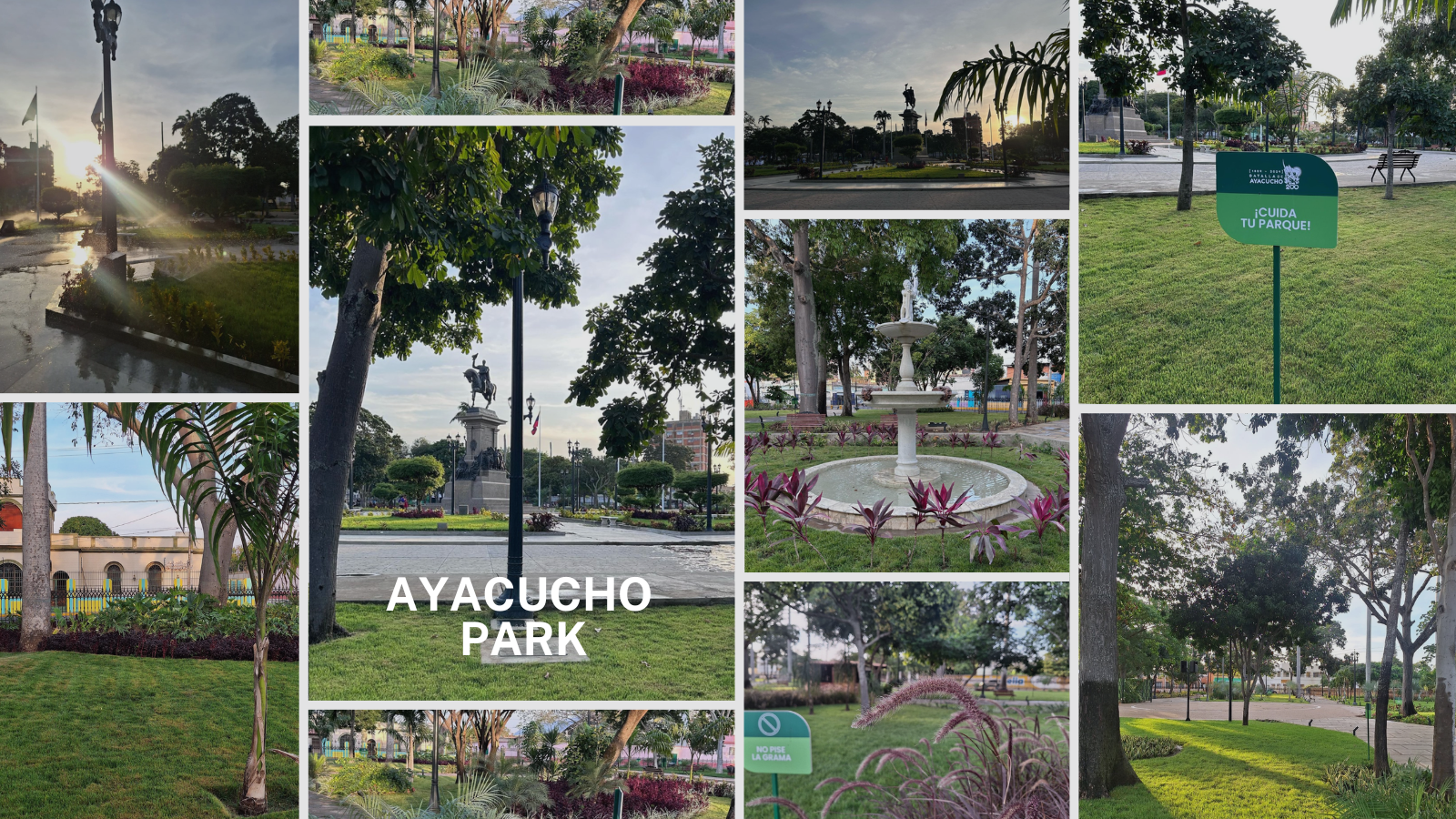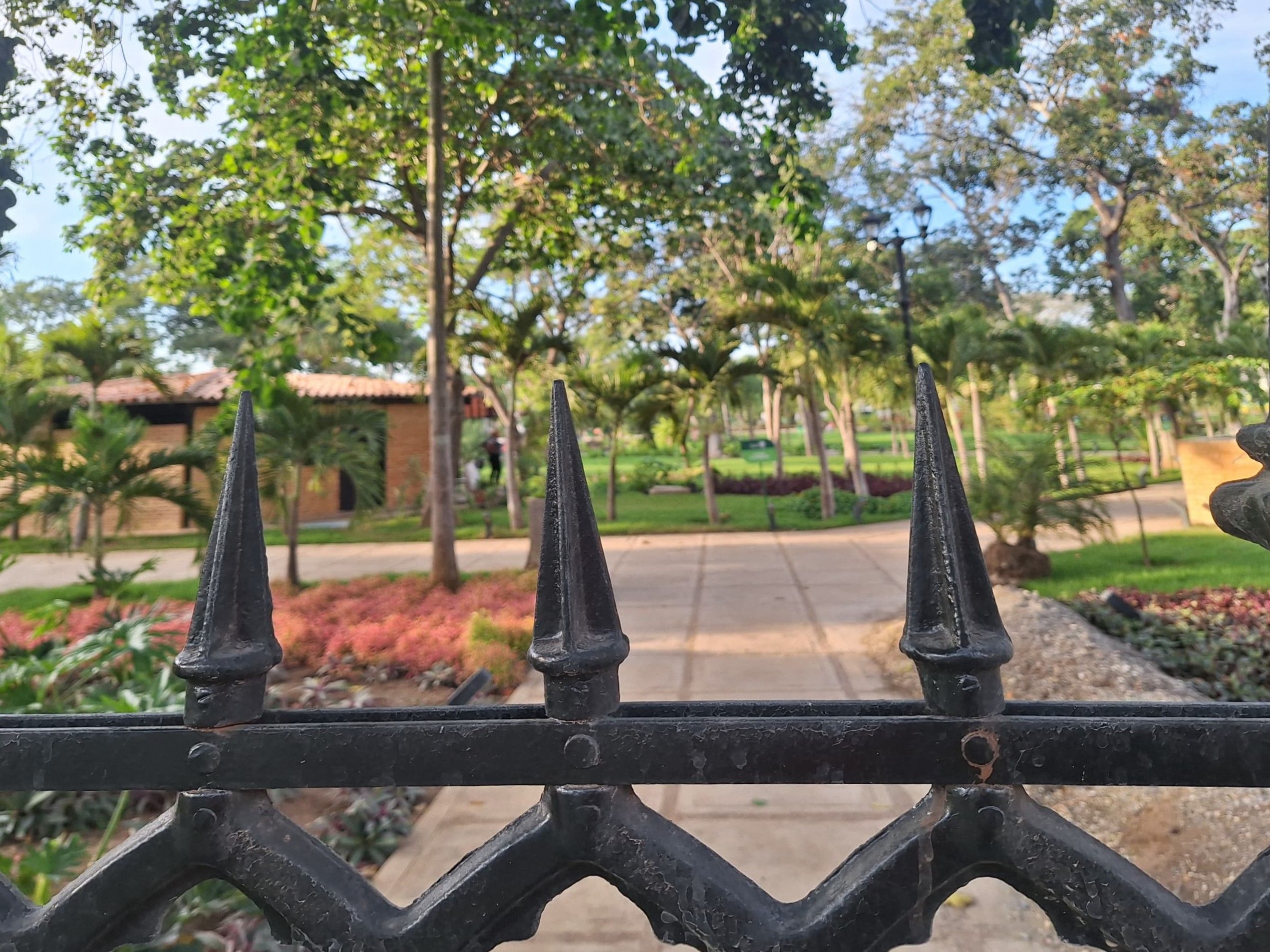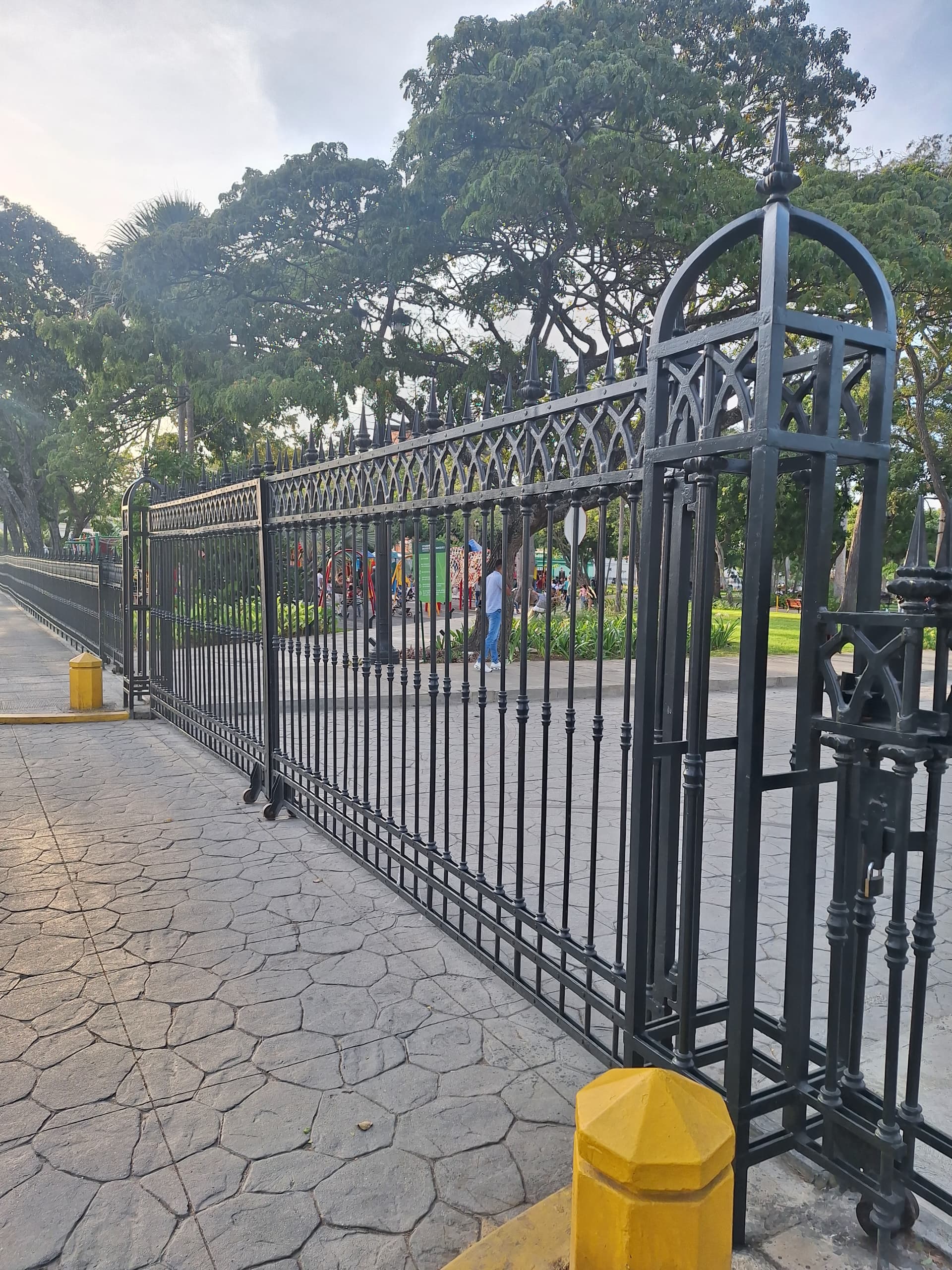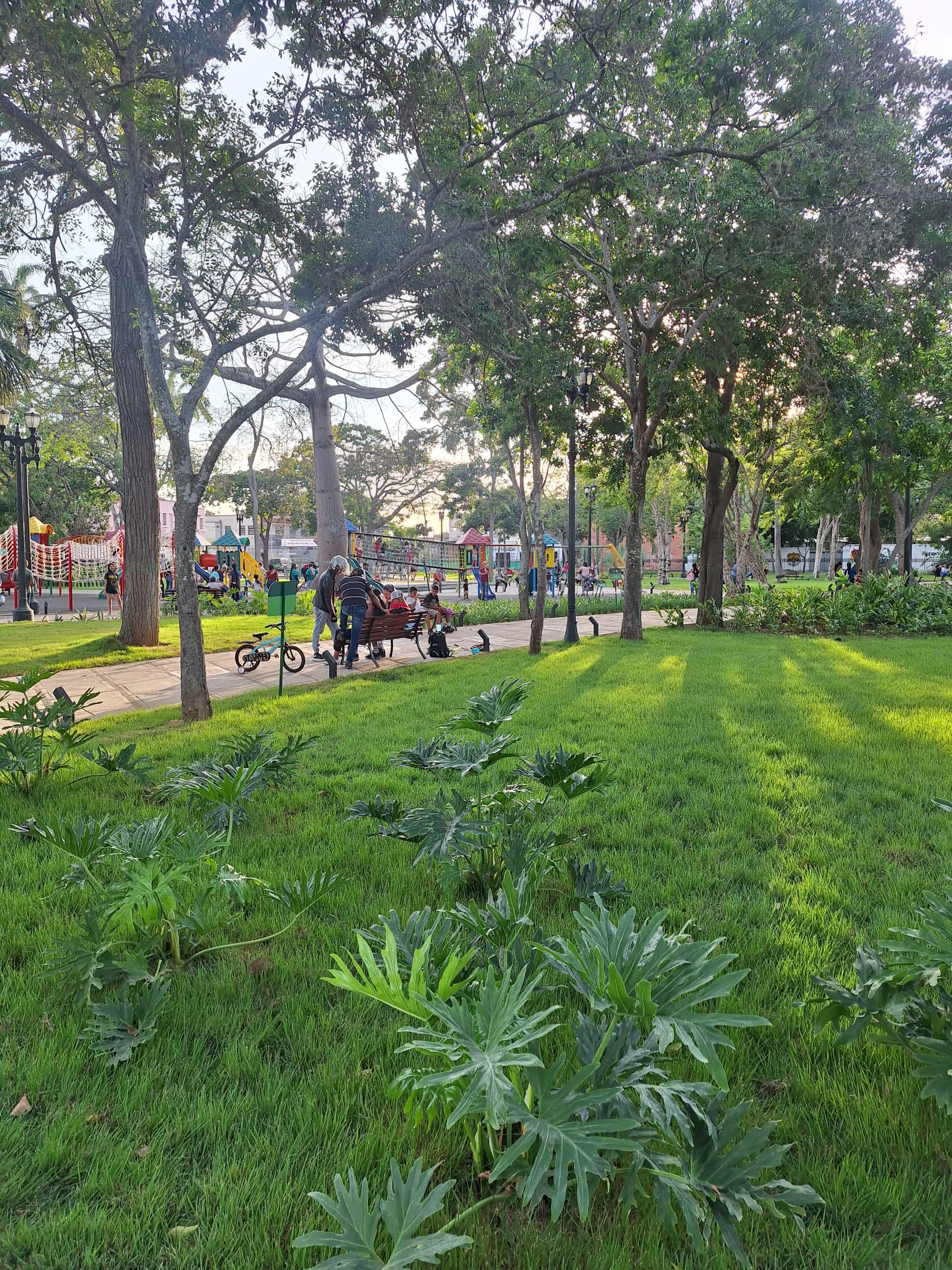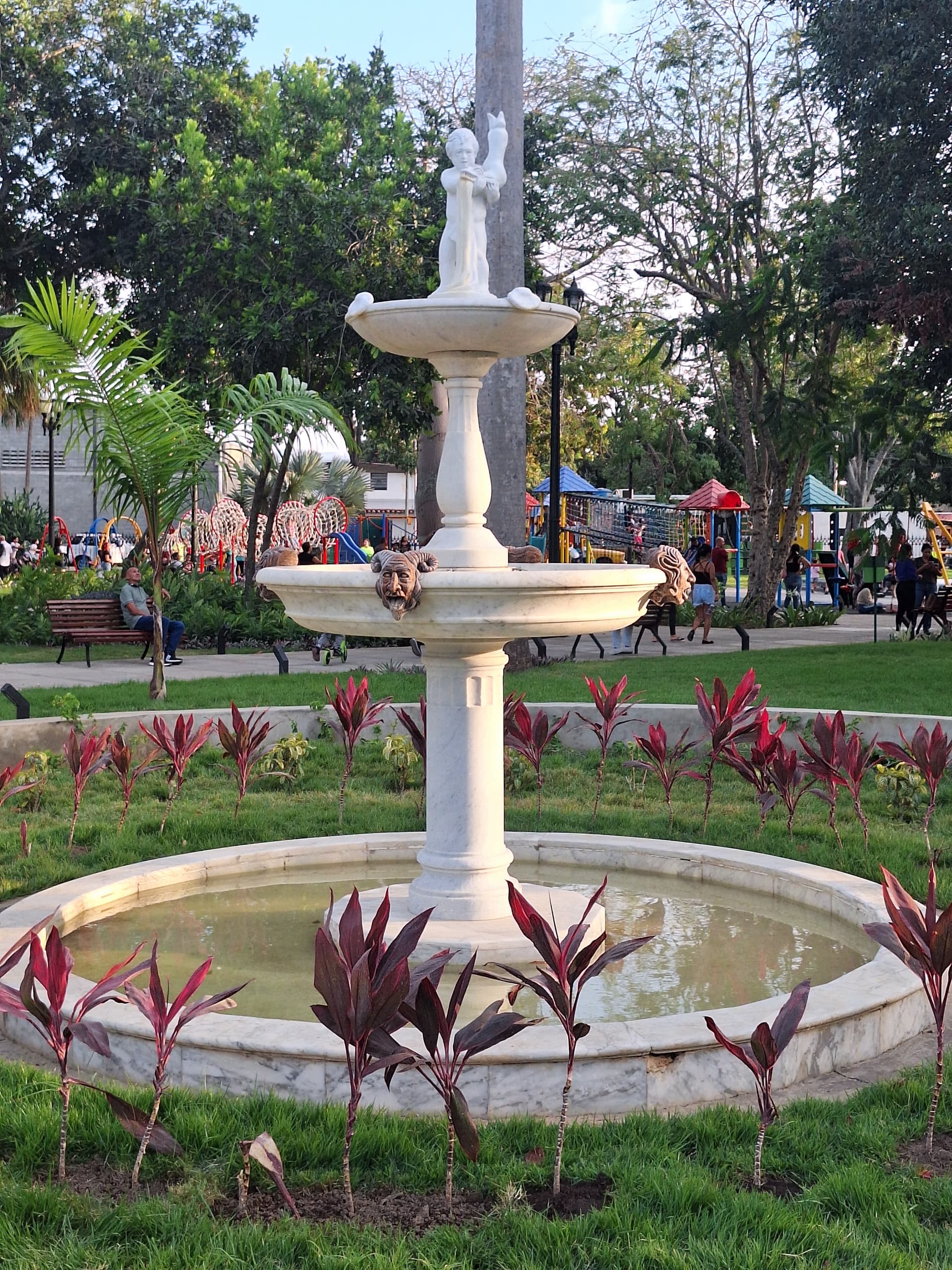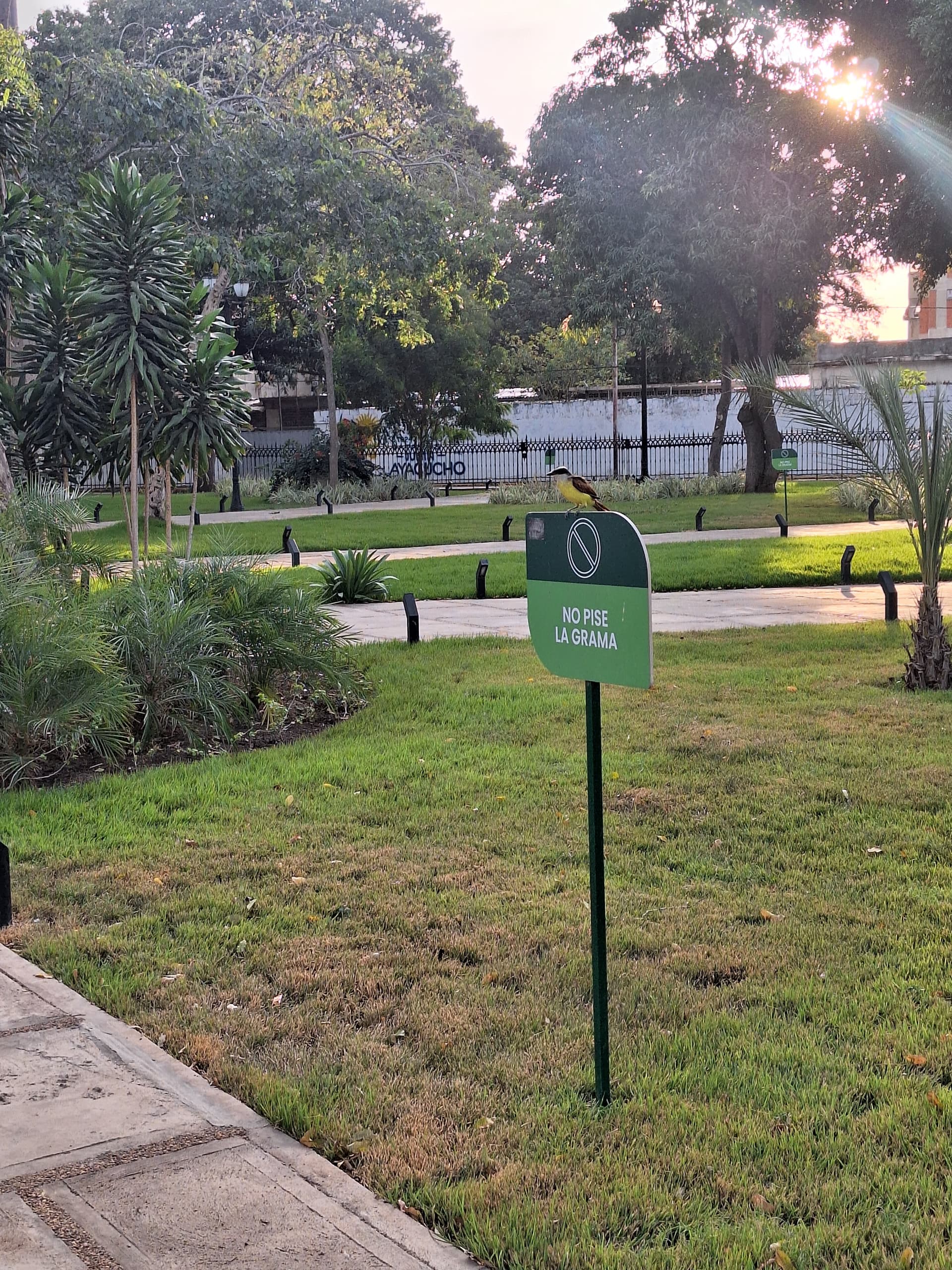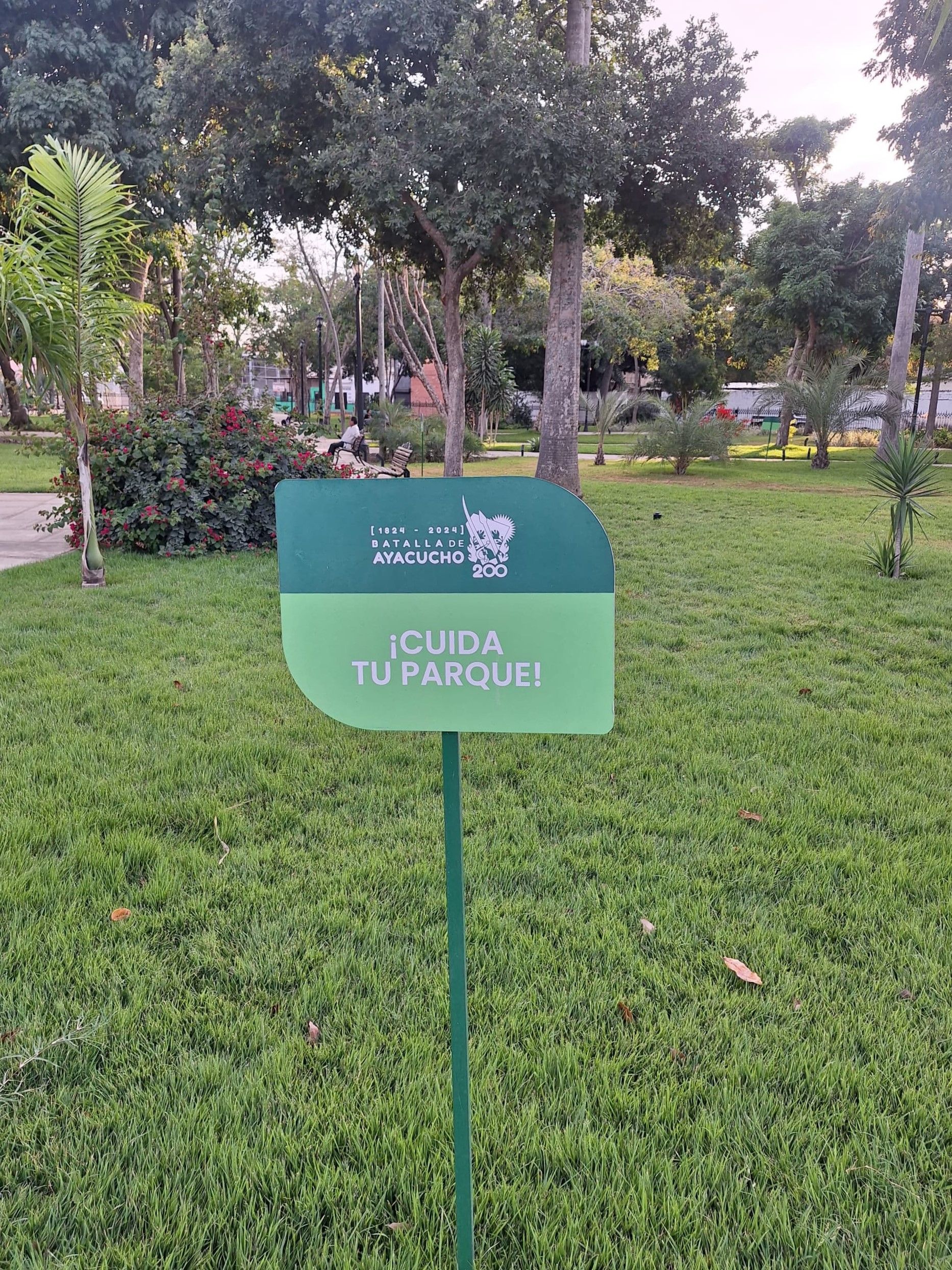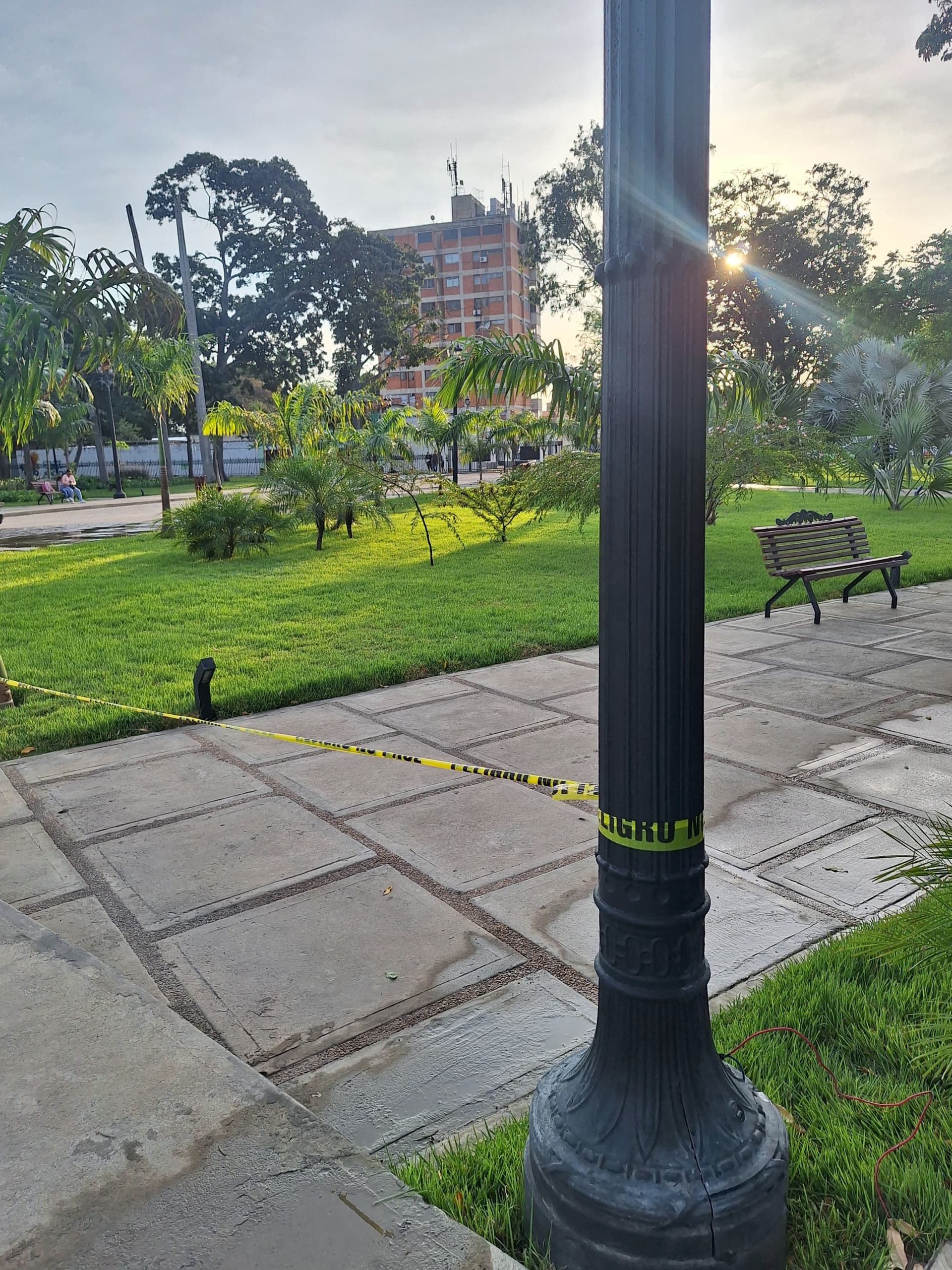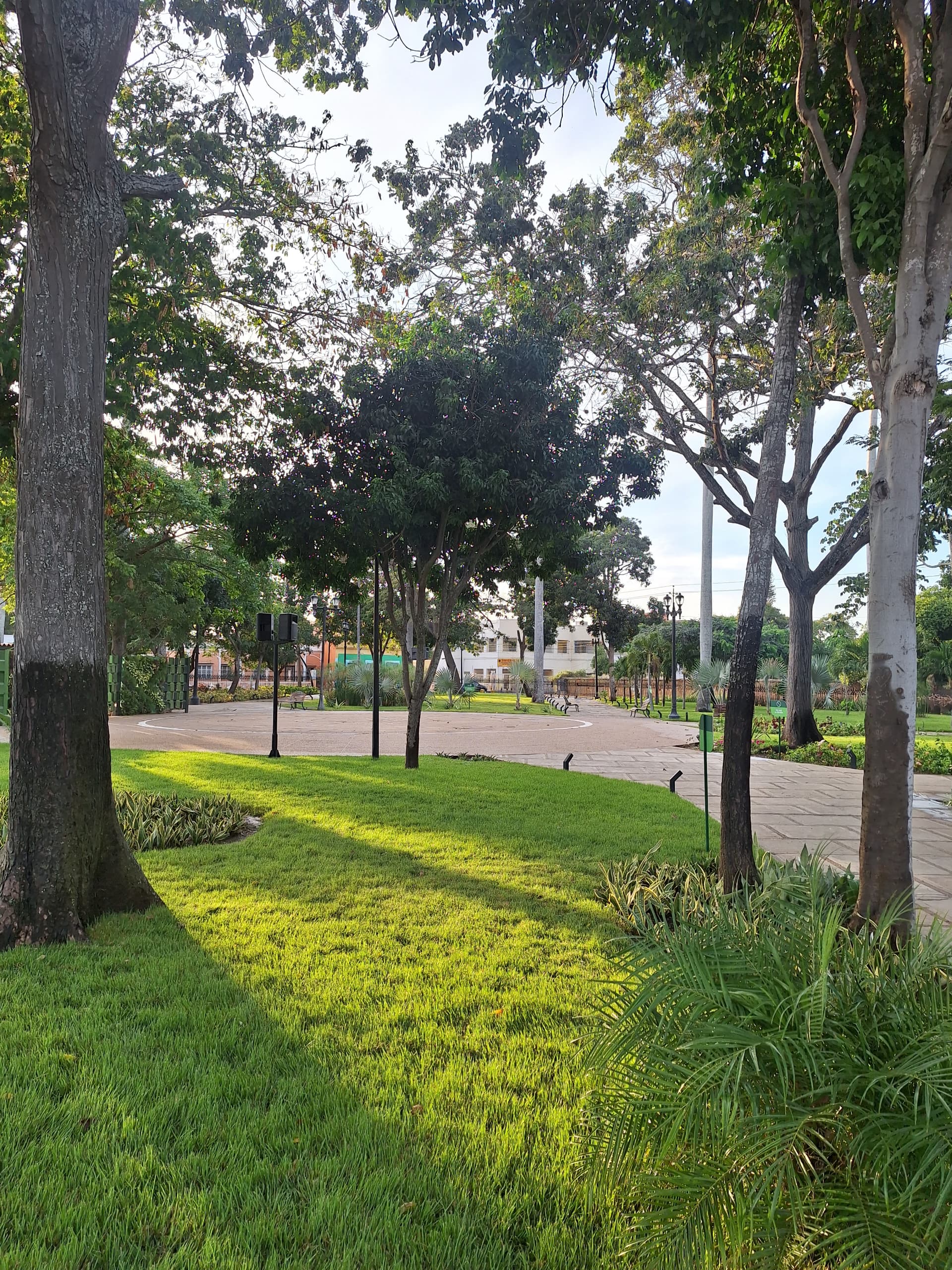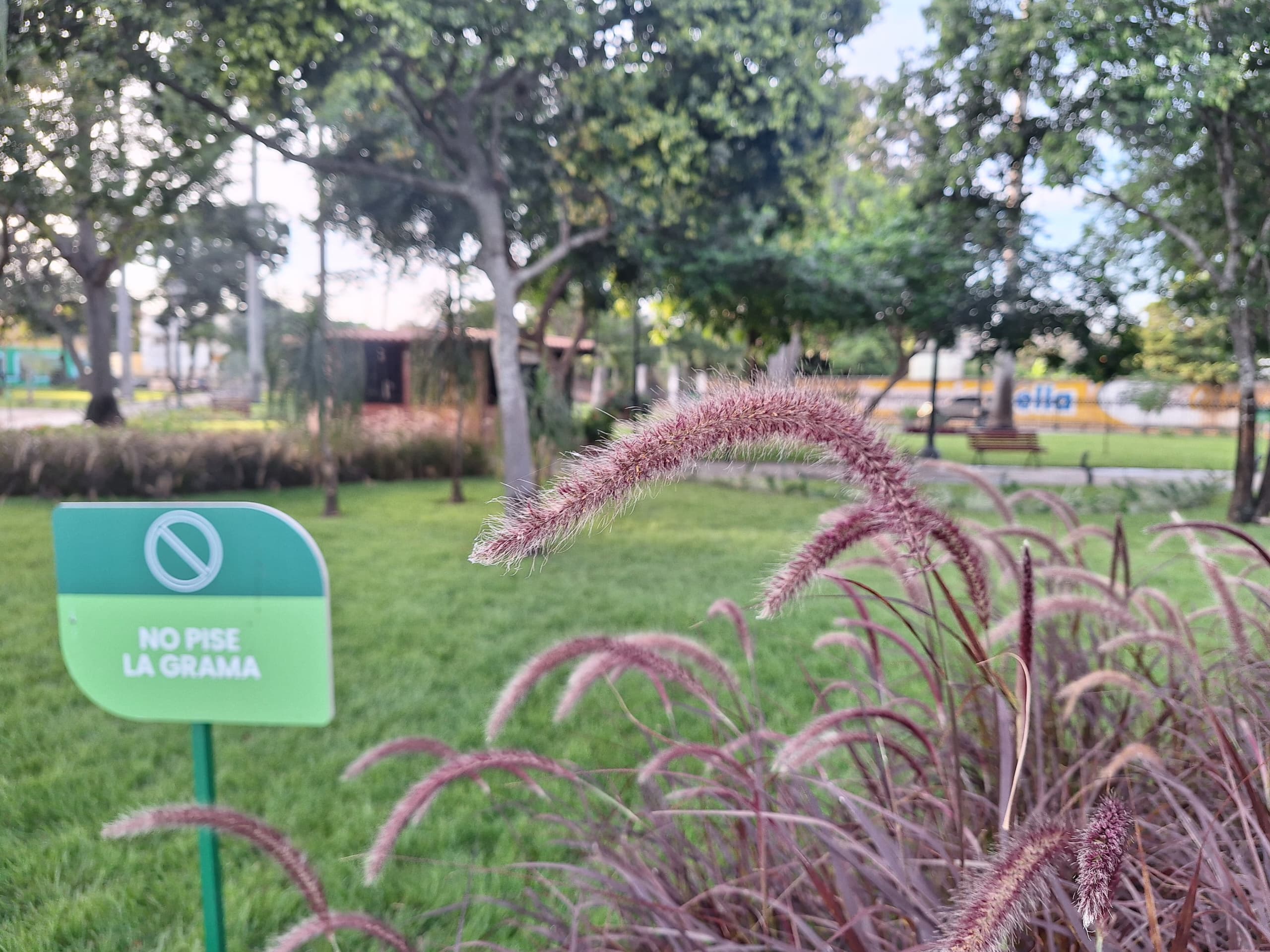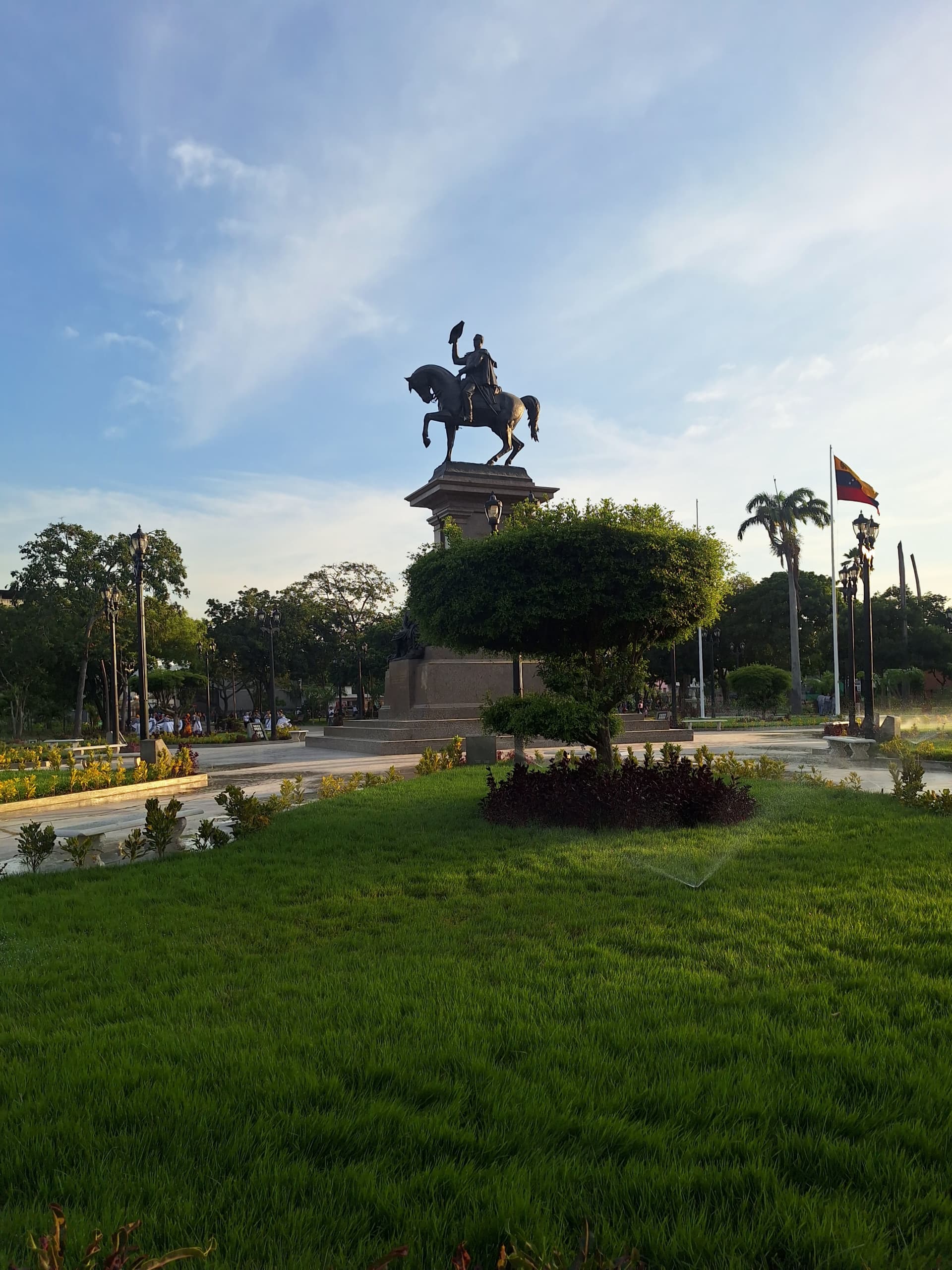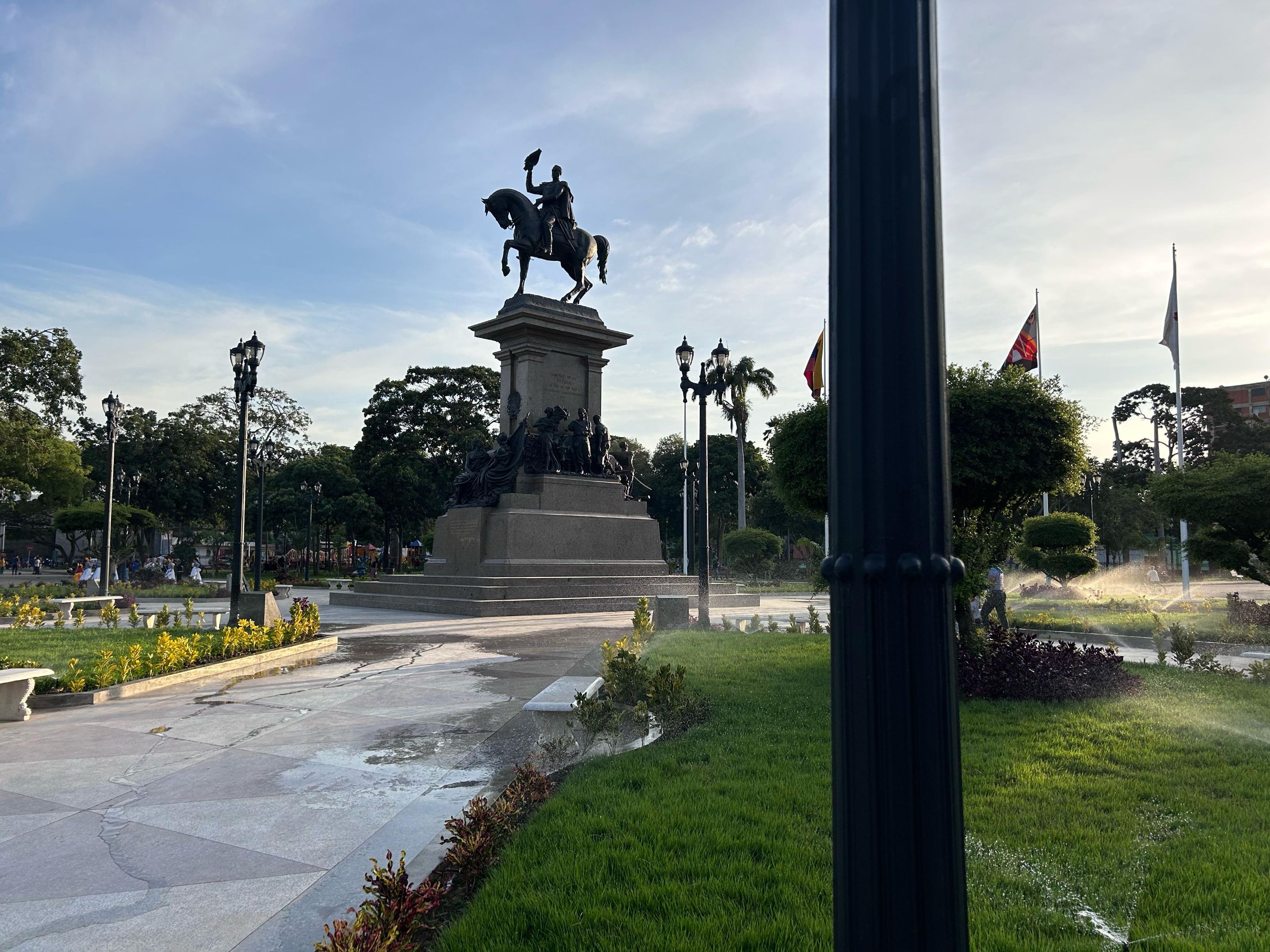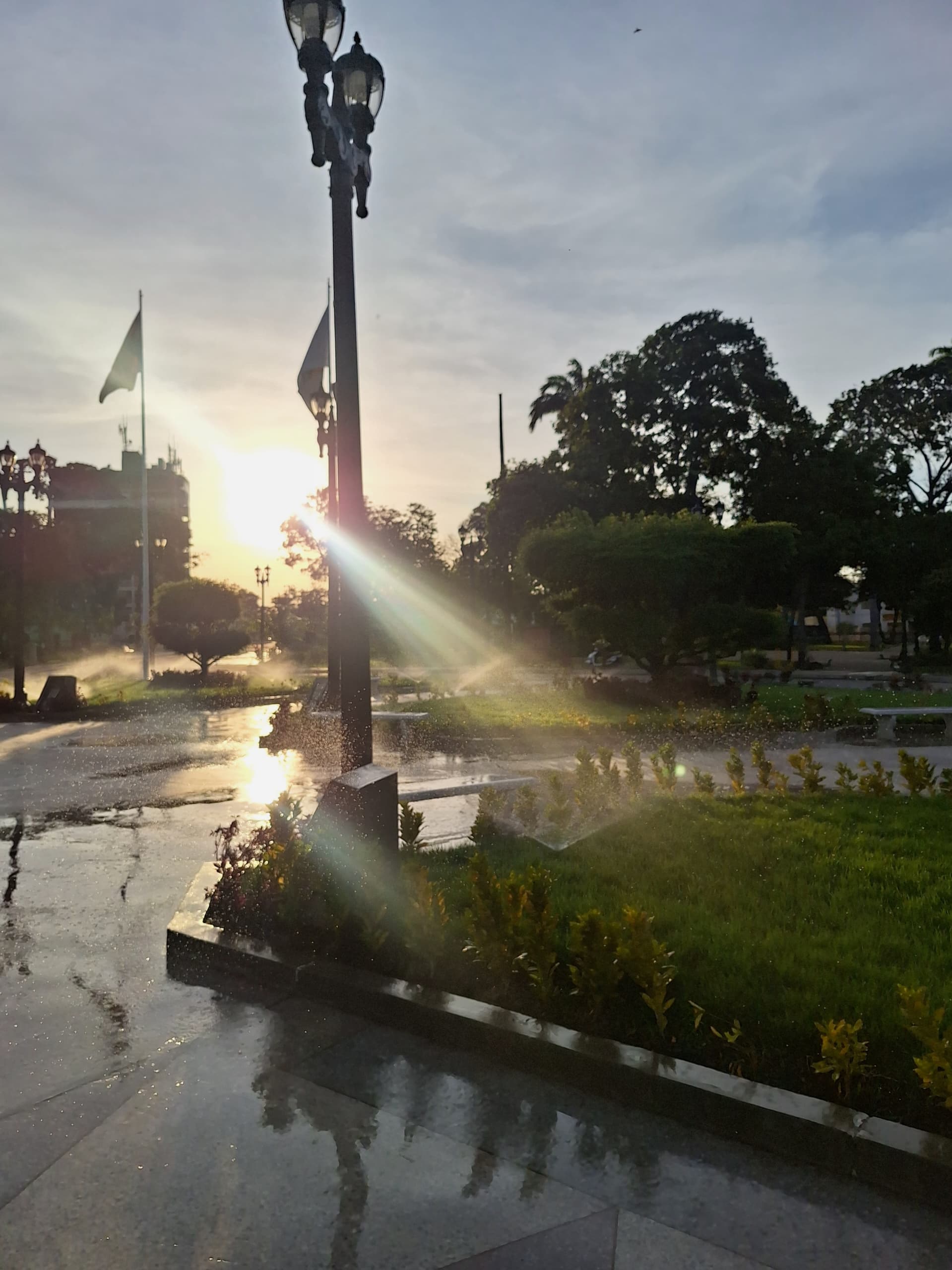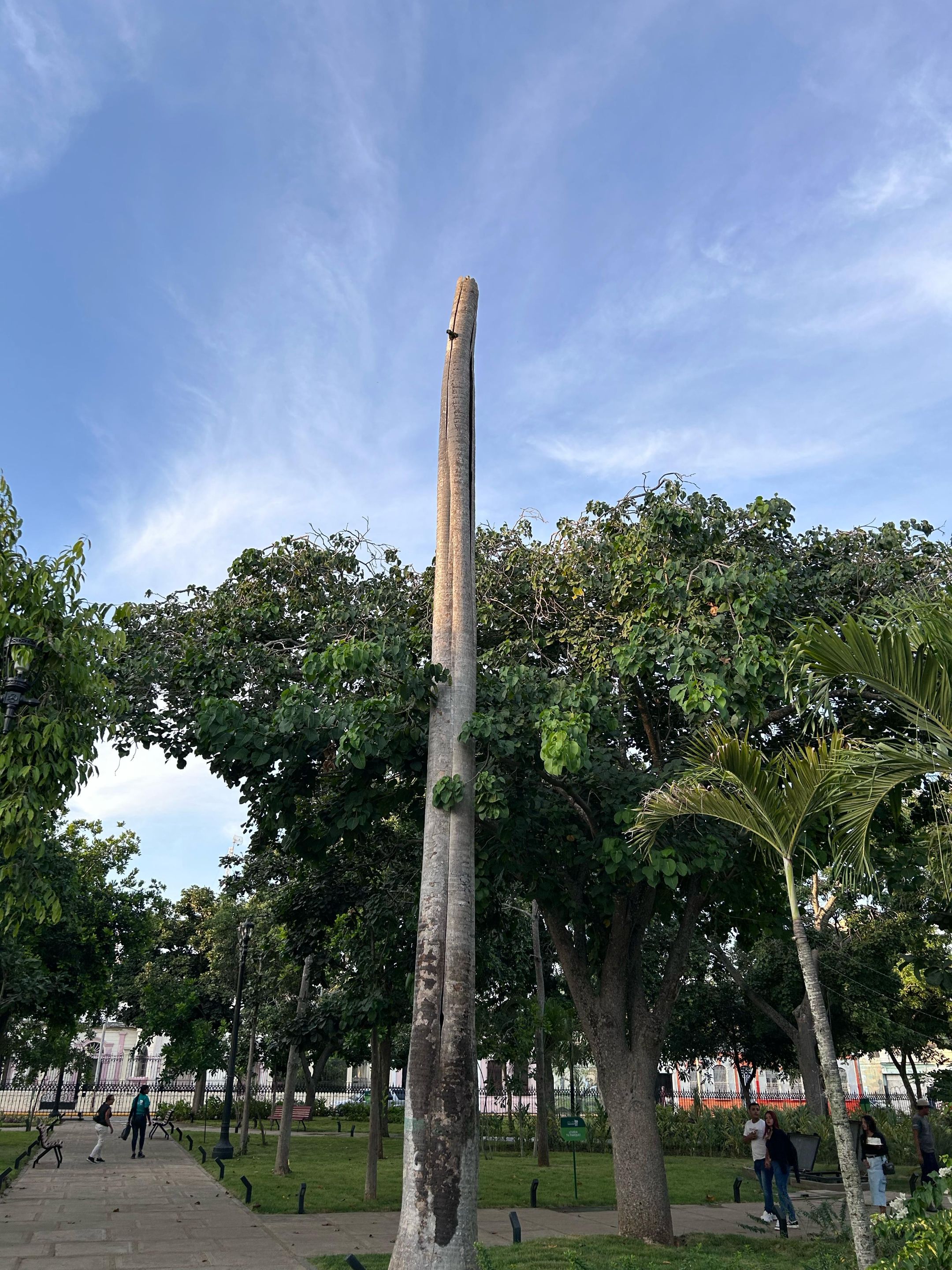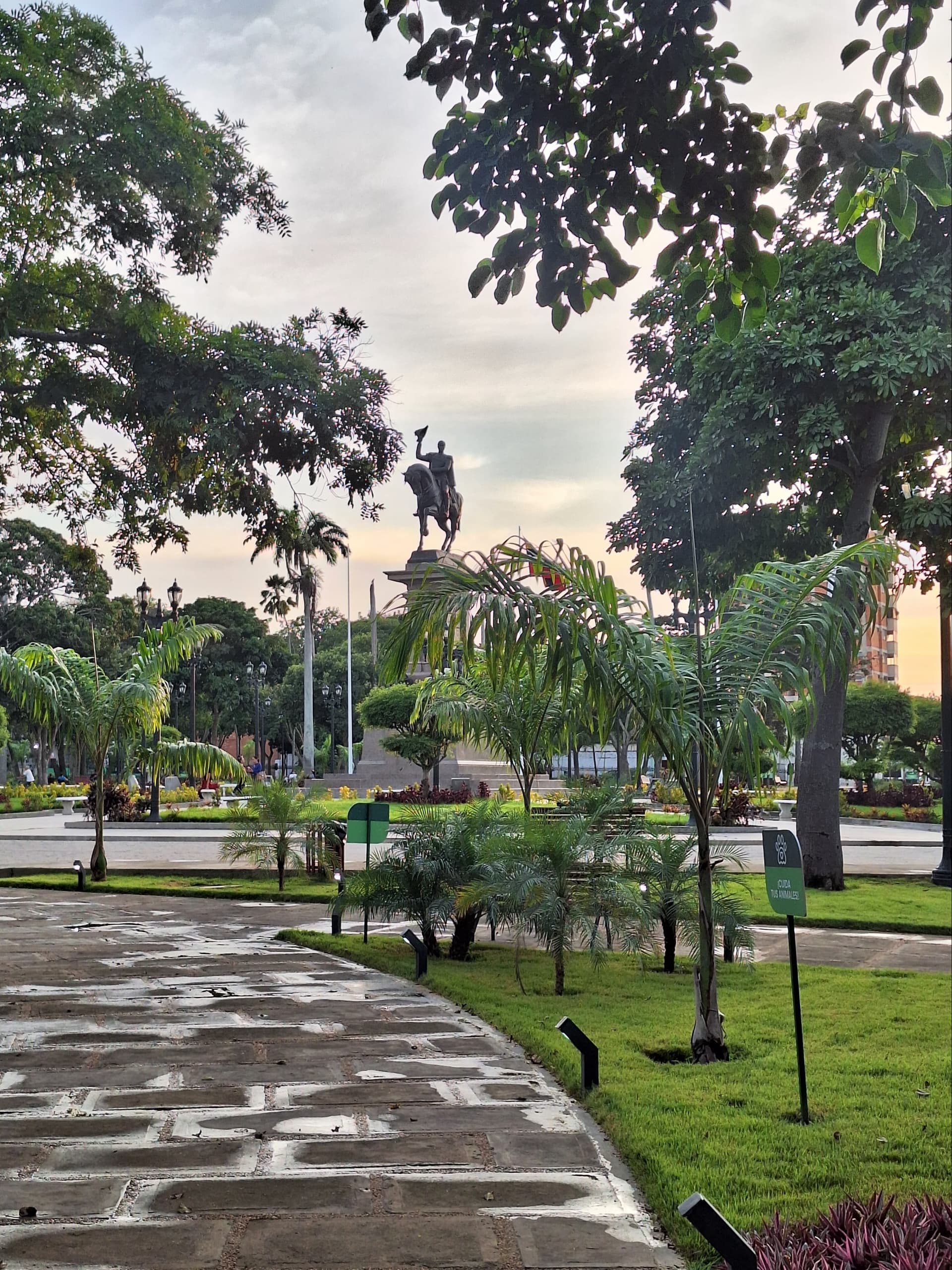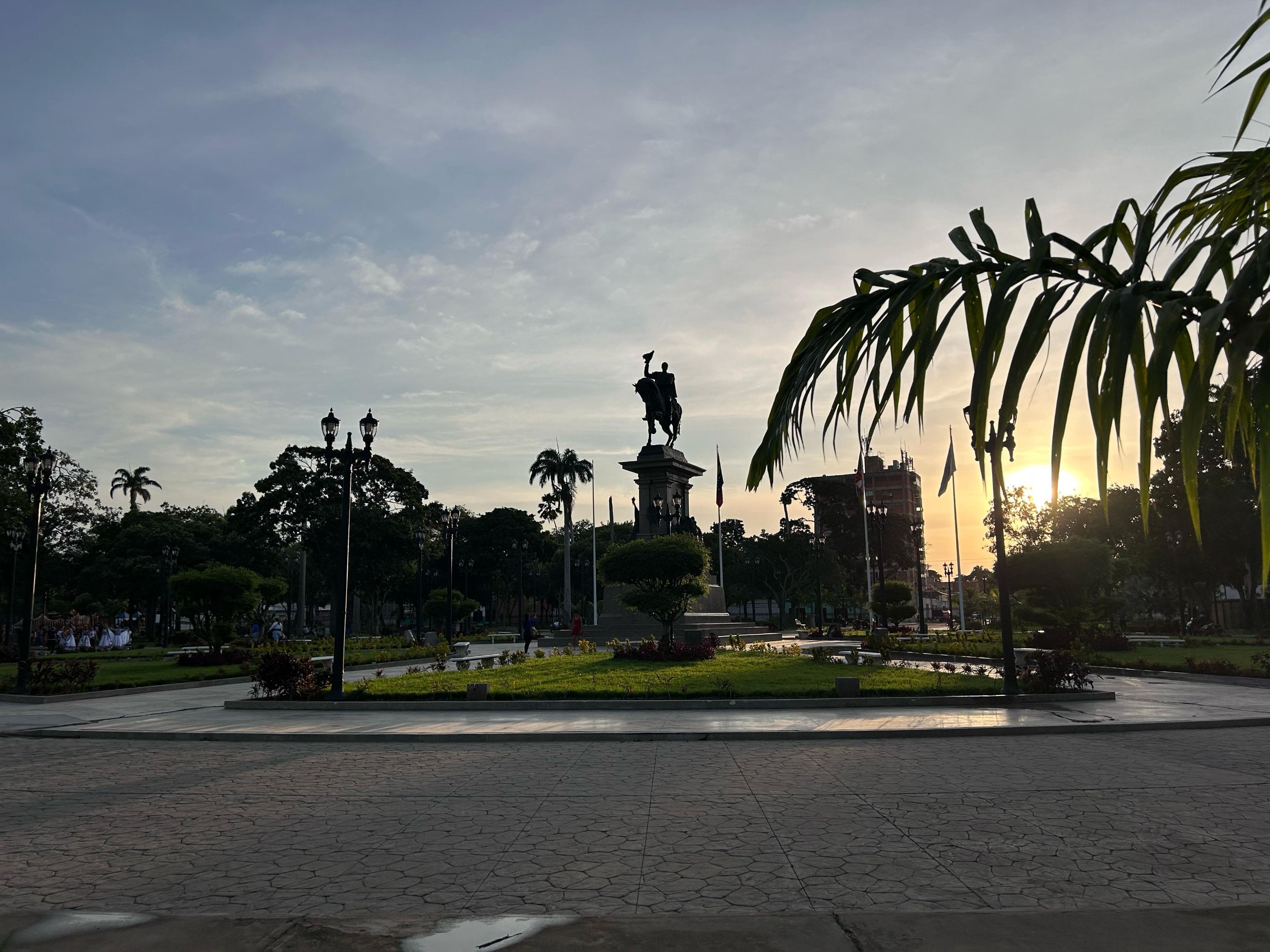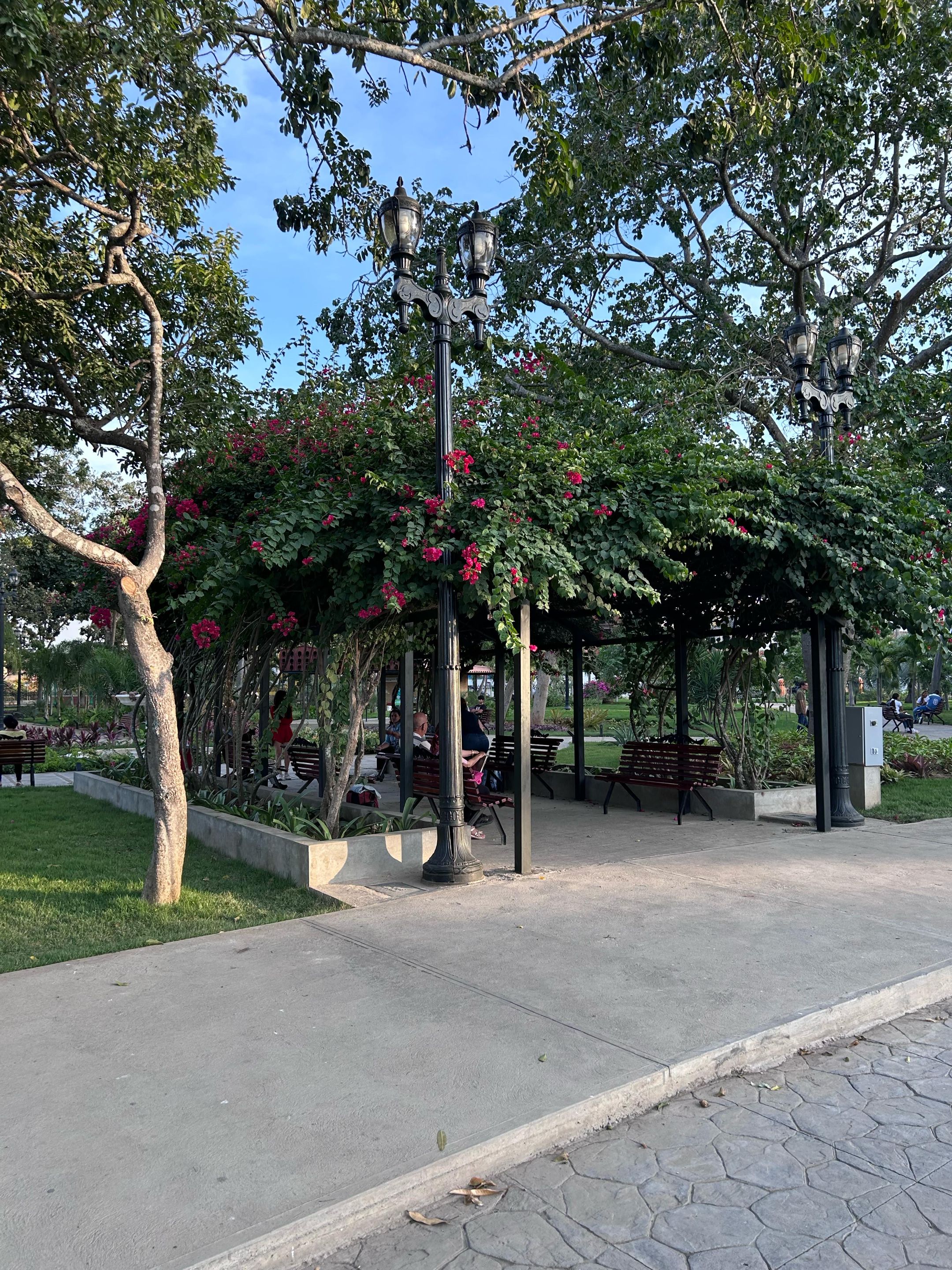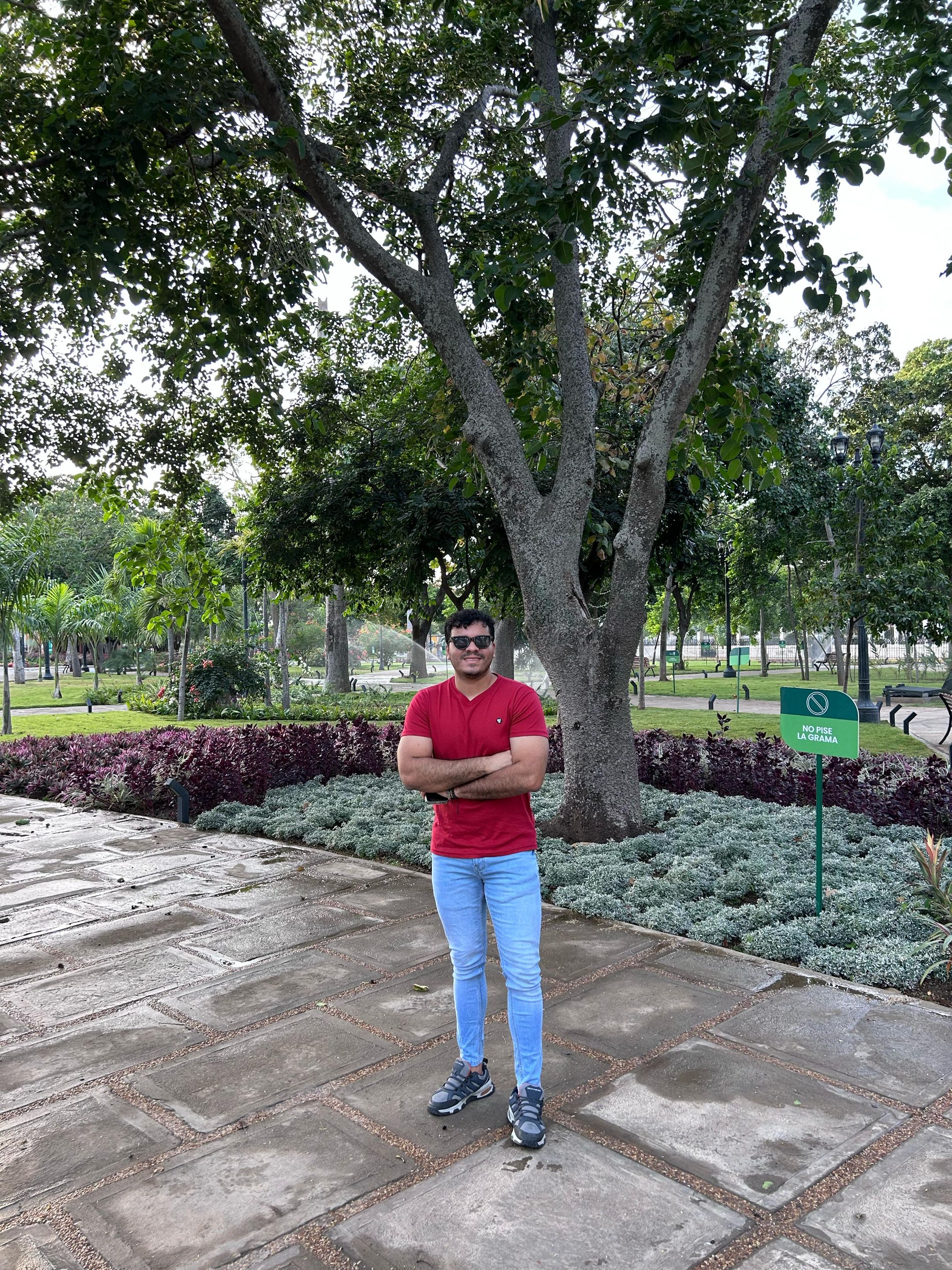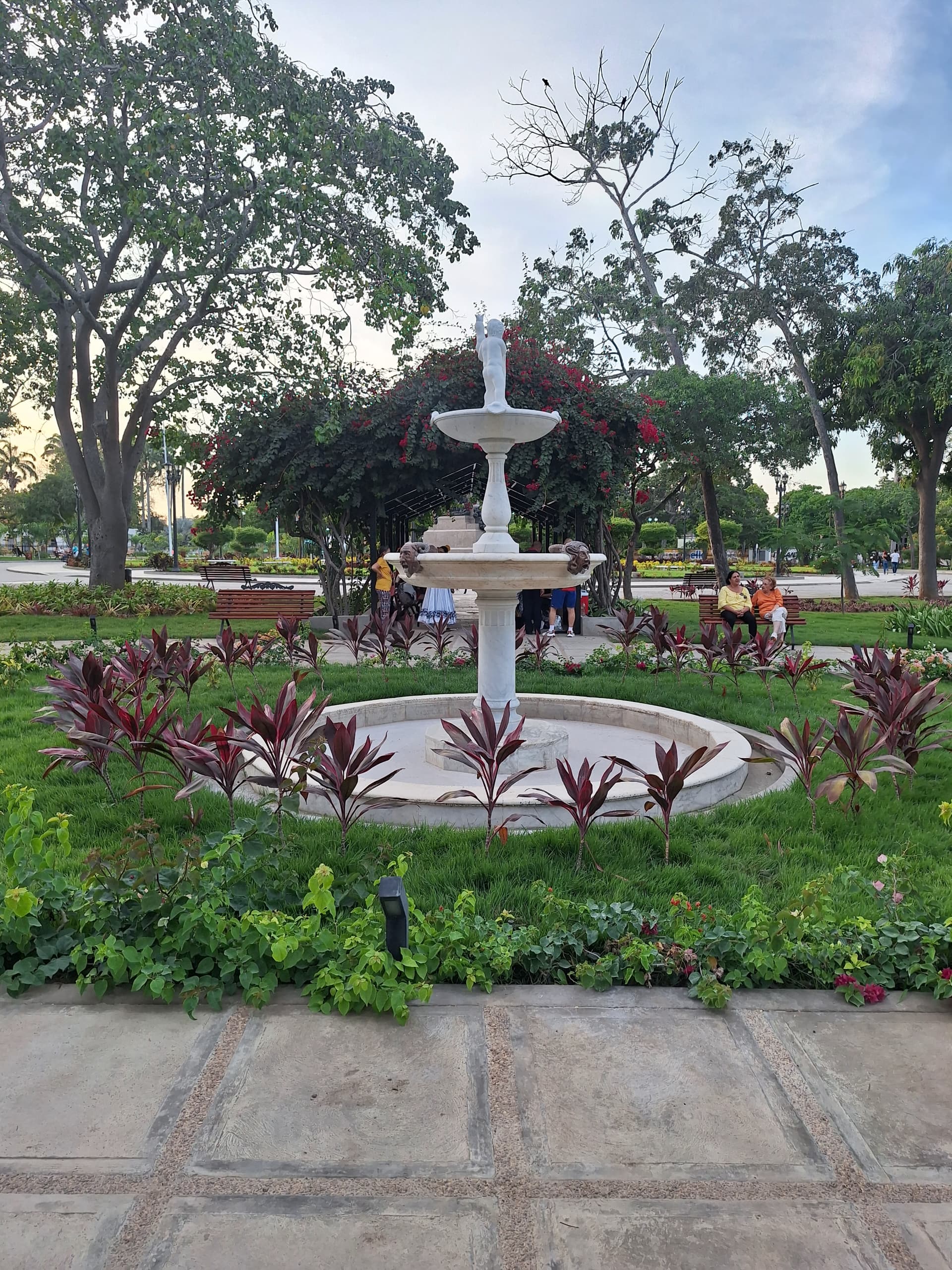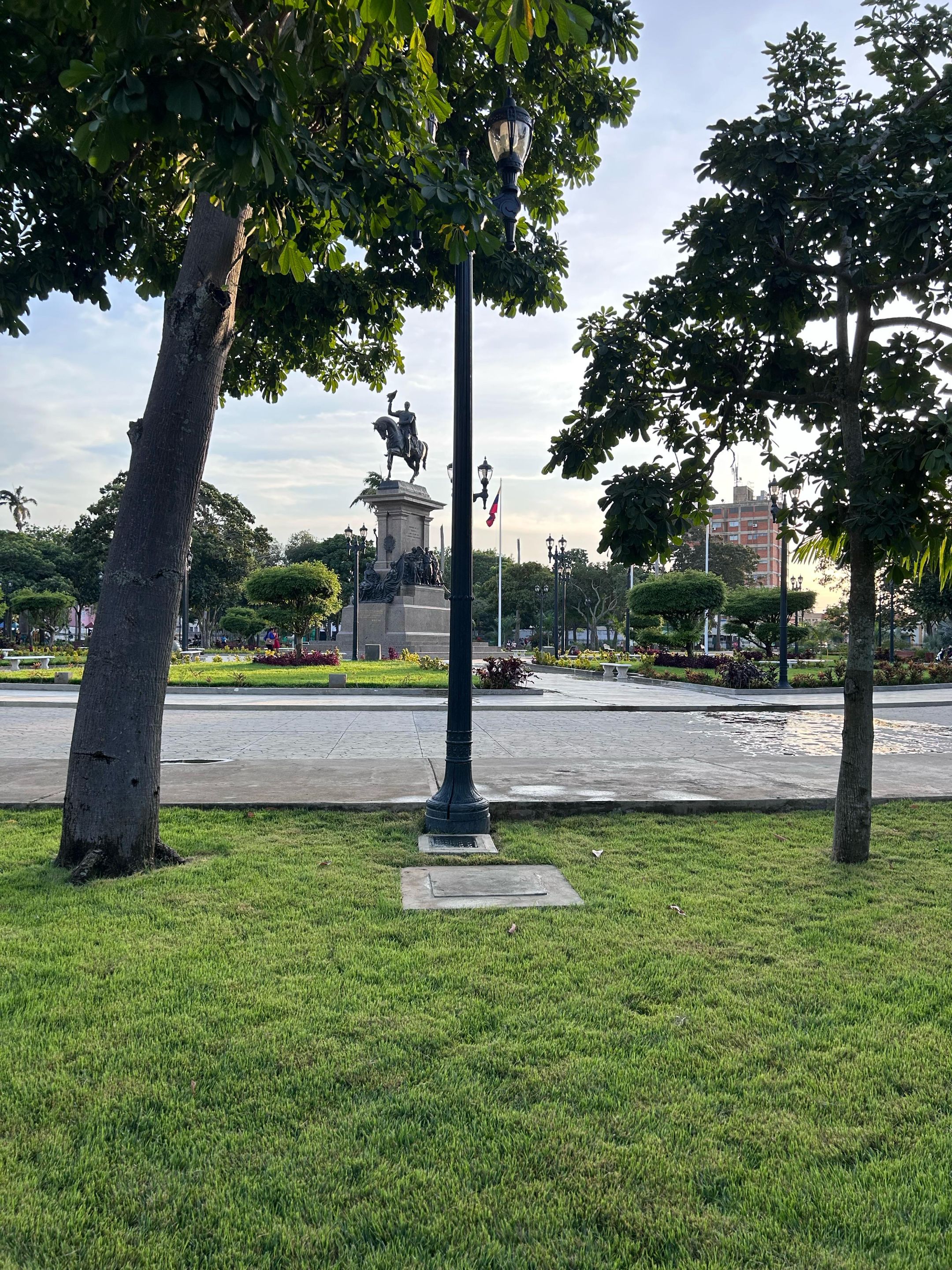Aventura en El Parque Ayacucho: Descubriendo el Renacimiento de un Tesoro Histórico
Ha sido una semana dura. Me enfermé y he tenido mucho ajetreo en el trabajo. Desde hace días quería escribir sobre esta aventura, pero físicamente estaba agotado y necesitaba un pequeño descanso. Solo dejé mis actividades en el gimnasio y cumplí las requeridas de trabajo. Además, necesitaba recuperarme porque mañana, lunes 24 de marzo es mi cumpleaños. La aventura de esta ocasión fue en el Parque Ayacucho.
Debo aclarar que este es un lugar icónico. Quería ir desde hace tiempo debido a que había leído en redes sociales que había sido restaurado. Muchos llaman a este lugar parque, pero en realidad es una plazoleta de estilo europeo único en Latinoamérica. El Parque Ayacucho es la única plaza que permite, por medio de su diseño, la circulación de vehículos en su interior. Esa circulación ocurre a través de los cuatro puntos cardinales y te lleva al centro de una gran rotonda.
El Parque o la Plazoleta Ayacucho se encuentra en las carreras 16 y 14 entre las calles 43 y 41 de la ciudad de Barquisimeto. Es uno de los espacios urbanos más atractivos y característicos de la arquitectura de principios del siglo XX en Venezuela.
Decidí ir con mi hermano a la plazoleta porque necesitaba desconectar y tener un momento de tranquilidad. Fui alrededor de las 5:00 p. m., hora de Venezuela. El recorrido fue rápido hasta allí en la motocicleta. >
Este lugar es sagrado y uno de los tesoros arquitectónicos de Venezuela. La identidad que posee la plaza es característica de la propia forma y composición de las manzanas de la ciudad de Barquisimeto.
Como urbanista, entiendo que Barquisimeto creció con el diseño reticular de las manzanas, muy similar a Barcelona o Madrid. Esto llevó poco a poco la modernización de la ciudad y una manera única y exquisita para establecer direcciones a través de numeraciones de calles y avenidas. ¿Por qué todo esto? Ese principio es lo que permitió que diseñaran la plaza conectada con ejes viales en los cuatro puntos cardinales.
Al llegar a la plazoleta, ingresé por la entrada del sur. La plaza se encuentra rodeada de rejas. Desde la acera se puede ver el interior mientras te acercas a la puerta de entrada. Me quedé algo lejos para observar lo impresionante que había quedado la restauración.
Algo que me gusta de los elementos arquitectónicos del Parque Ayacucho es el diseño original de las lámparas, que datan de cuando comenzó su construcción en 1930.
Logré llegar a una de las entradas, donde se puede notar el eje vial por donde circulan los vehículos, pero estaba cerrado debido a actividades internas en la plazoleta. La entrada te invita a ingresar y a tener un viaje en el tiempo. Observa el diseño de la entrada y notarás lo que digo.
Noté que los senderos para caminar estaban restaurados y limpios. Esta pequeña impresión causa bienestar y te permite conectar inmediatamente con el espacio. En la misma entrada, me encontré con un aviso de las reglas que se deben cumplir en la plazoleta.
Algunas de ellas son: no fumar, no ingresar bebidas alcohólicas, no estacionar vehículos, depositar desechos en las papeleras, la velocidad máxima permitida es de 10 kilómetros por hora para vehículos y está prohibida la venta de artículos que obstaculicen la movilidad (ventas ambulantes).
En la plazoleta había muchos niños jugando en la entrada. Esto significa que el espacio urbano está revitalizado y ha tomado significado. La alegría y las risas de los niños se sentían en los alrededores.
¿Esto es así en toda la plazoleta? La respuesta es no. Hay espacios donde no hay personas y es tranquilo. Después de todo, tiene una extensión de 4 hectáreas, lo que equivale a 40.000 metros cuadrados. La vegetación en la entrada era preciosa. La jardinería era típica de plazas del primer mundo.
Seguí recorriendo la entrada de la plaza. Era una lástima que en ninguna parte me encontrara con un plano de las secciones de distribución, pero logré llegar a una de las fuentes icónicas, hechas con mármol de Carrara y talladas por la firma Roversi en Italia. Debo destacar que el mármol que se usó en las fuentes fue extraído del cerro Ávila de la ciudad de Caracas.
La fuente en la parte suroeste tiene un aviso que indica que está prohibido ingresar a esta área, lo que implica que solo pueden apreciarse de lejos. Los alrededores de la fuente son preciosos. Una de las fotografías más impresionantes que logré capturar fue la de un pájaro. Traté de acercarme, pero salió volando. La escena fue muy linda.
Noté que la caminería estaba plenamente restaurada y los letreros eran abundantes. Me gustó que había uno que decía: “No pise la grama”, lo que significa un mayor grado de protección ambiental.
El Parque Ayacucho fue mandado a construir por el presidente del Estado Lara, Eustoquio Gómez (Venezuela, en ese momento, tenía una forma federal). Lo más sorprendente de ese hecho fue que Eustoquio deseaba y trajo árboles de los cinco continentes. Muchos no sobrevivieron debido a las condiciones climáticas. Hoy está lleno de chaguaramos.
Seguí recorriendo los alrededores de la parte suroeste de la plaza. La vista desde allí hasta la rotonda del centro era preciosa. Se veía claramente la calle por donde circulan los vehículos.
Aproveché y tomé algunas fotografías del mobiliario y de la imponente calle circular que rodea el centro de la plaza. 'Cuida tu parque, vale'; decía otro letrero, donde noté que decía 'Batalla de Ayacucho', sin ningún tipo de emblema del gobierno. Encantador.
Al ser tarde, los accesos por donde ingresan los automóviles estaban cerrados, pero aproveché para tomar algunas fotografías del eje vial noroeste y suroeste del Parque Ayacucho. Barquisimeto es conocido por ser la ciudad de los crepúsculos.
En este punto, el agua empezó a emerger en el parque debido a que debían regarse las plantas. El agua circulaba con tranquilidad, mientras se sentía una vitalidad única. No me acerqué inmediatamente a la rotonda.
Caminé a la parte noreste del Parque Ayacucho, pero estaba cerrada con cintas de peligro. Según uno de los oficiales, estaba restringido el paso a esta parte debido a la presencia de un panal de abejas. Sin embargo, todo estaba precioso y restaurado de manera impecable.
En esta parte, hay una especie de teatro circular para dar discursos. Las caminerías tienen bancos integrados; incluso hay cornetas de sonido. Además, cerca se encuentra una pequeña casa, o módulo policial. No ingresé, pero desde lejos tomé algunas fotografías.
Cerca de este lugar, me encontré con una planta que no veía desde que tenía 8 años. Solía jugar mucho con ella cuando era un niño. Me trajo buenos recuerdos. Por lo que noté, era la única que había en la plazoleta de este tipo.
La belleza de esta planta es preciosa. Particularmente, a mí me gusta mucho. La naturalidad con la que se exhibe es impresionante. Hay muchas plantas en este parque, lo que ocasiona un espectáculo floral y natural.
En este punto, decidí acercarme a la rotonda que tiene la estatua del gran Mariscal de Ayacucho, Antonio José de Sucre. La vista de la rotonda es increíble; se siente una escena imponente y, sobre todo, patriota. Las farolas de luz hacen que todo sea más impactante visualmente.
Evidentemente, había mucha presencia de agua debido a que las regaderas de jardín estaban activadas. Logré tomar muchas fotografías de la imponente escena del monumento central. La altura, creo que es de 6 metros o más.
El monumento está perfectamente integrado y conectado. Lo increíble es que la majestuosidad y su significado histórico se mezclan con la identidad propia de la plaza.
La mejor hora para venir a la plaza sin lugar a dudas es antes de las 4:00 p.m., hora de Venezuela, porque podrás capturar las mejores fotografías y todo no estará tan lleno de agua.
Quiero que mires estas fotografías. Di lo mejor de mí en cada una de las escenas. Me encantó la coloración, pero la que más me gustó fue la que muestra cómo el agua y el atardecer se imponen. Lo hermoso está en aquello que podemos valorar al observar, creando recuerdos.
En esta parte también están algunos de los bancos de mármol icónicos de la plaza, elaborados en Italia. Una belleza abrumadora desde el punto de vista de una persona que ama la ciudad y la arquitectura.
Seguí recorriendo la plazoleta. En esta ocasión, estaba en la parte noreste, donde todo era impecable. Había un chaguaramo, sin hojas, que tenía una casa de loros en la parte superior. Intenté enfocar la cámara, pero no se veía.
Desde este lugar, la vista del centro de la plazoleta era increíble. Te impactaba la belleza de la escena. Lo que más me impactaba era que me trasladaba a imágenes de plazas preciosas de Europa; incluso imaginé la escena similar a la Plaza Baquedano en Chile.
Lo más precioso era la manera en que la naturaleza, el monumento, la rotonda, los edificios y el sol, que se ocultaba, creaban una escena única. Yo llamaría esto un ejemplar o tesoro urbano inalienable.
En la parte noreste del parque también hay una fuente de mármol preciosa y bien conservada. Además, la presencia de arbustos es más diversa que en las otras partes que vi. La mejor vista está aquí.
Aproveché y me tomé unas fotografías aquí. Dejaré una de esta aventura para que veas lo precioso que es este lugar histórico y lo emocionado que estaba. Por cierto, rebajé mucho y me veo bien. Yo también estoy sorprendido por eso.
En este punto estaba comenzando a oscurecer. La última parte que me faltaba ver era la sección del sureste. Aquí había una casa recubierta por árboles de tipo enredadera; era preciosa. Recuerdo que esto no estaba la primera vez que vine a la plaza (fue hace más de 9 años).
Debo destacar que esta parte era la que tenía menos personas. Me encontré con papeleras de colores que identificaban el tipo de basura: papel, vidrio, y plástico (algo que no se ve en la ciudad).
Esta área te permite ver el eje vial y uno de los colegios solo para mujeres más antiguos y emblemáticos de la ciudad. Sí, el Colegio María Auxiliadora. La fachada del colegio está deteriorada.
El área noreste es preciosa, igual que las demás; también cuenta con una fuente que está detrás de la casa con enredaderas. Todo se conecta con las caminerías.
En este lugar también está la casa de las palomas. Todas estaban limpias y barnizadas. Eso es algo importante. La mayoría de las plazas que he visitado en Venezuela tienen pocas palomas. Es importante que tengan espacios para que puedan dormir y estar. Después de todo, las plazas son de ellas principalmente.
Mi aventura en este lugar terminó de manera maravillosa. Esta vez me extendí bastante, pero alguien me dijo por aquí que no importaba. Creo que lo más importante es crear recuerdos. Estoy seguro de que dentro de tres o 20 años cuando lea este post estaré satisfecho. Cree un recuerdo memorable que hoy comparto contigo el mes de mi cumpleaños.
Contenido original de
@neruel. Todos los derechos reservados © 2025. Imágenes: Samsung Galaxy A54 - iPhone 15. Traducción al inglés y corrección gramatical: ChatGPT - DeepL - LanguageTool.
